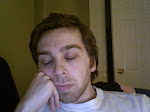Sometimes, I believe that silence makes for the best music. In silence, we can find the true meaning of sound. While that may seem counter intuitive, it is somewhat of a shared philosophy; not only among zen Buddhists, but musicians.
In the early 1950s, composer John Cage created a piece for piano entitled 4'33" (four minutes and thirty three seconds). The piece, as figured, is 4'33" in length. During this time, not a single note is played. Rather, the pianist sits at the instrument, and watches four minutes and thirty three seconds go by, on a stopwatch. You might think, "this is not music." But, that prompts the concept of music's definition. This is an age-old discussion, and is even recently discussed in a new book by Daniel Levatin; The World in Six Songs. What is heard during 4'33", while not notes from the piano, are the sounds of the surrounding environment; the wind, birds, creaking of a wood floor, etc. The piece is, in essence, music in silence. John Cage himself said, "I have nothing to say, and I am saying it." The connection can be made, then, for having nothing to play, and playing it.
I mention this, to make the point that there never truly exists such a thing as absolute silence. The world is never quiet, and I say this not only as a resident of the city that never sleeps, but one who understands sound. It is, indeed, everywhere. Even in the quietest of places, we are kept company by the music of our bodies. As long as we breathe, blink and listen, we are ourselves noise producers. Even our nervous systems create a "hum" that, while we cannot hear per-se, does resonate, and therefore makes a sound.
I would not dare argue, or even attempt to answer the question of “what is music.” Even as a musician, the answer to that question varies from person to person, and as there has been sound and music predating the historical record of our planet, no one person would have the answer. But again, sometimes, the prettiest melodies, most moving crescendos and captivating compositions can be found not by turning on a radio or visiting a concert hall, but rather, by closing our eyes, laying back in our chairs and letting the tones of our lives carry us away
Subscribe to:
Post Comments (Atom)

No comments:
Post a Comment